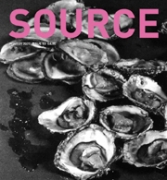EDITORIAL:
Issue 53 — Winter 2007
Issue 53 — Winter 2007
View Contents ▸
Art photography has often been an object of suspicion. It attracts the hostility of those who believe that functioning as art betrays photography's allotted role of capturing reality, and the condescension of others who say that photography is not a suitable medium for human expression. But is there any basis for these attitudes? And given the present diversity of photography presented in galleries can we make a positive statement about what art photographs can achieve?
The philosophers Patrick Maynard and Kendall Walton have attempted in their essays and books to identify the fundamental nature of photography. In discussion with Richard West they explain some of its basic components and how these have been misapprehended by the 'nay-sayers' and sceptics who mistakenly believe that a connection with reality cannot coexist with the fictional and imaginative. Adding to this foundational statement Lucy Soutter surveys a wide range of attitudes to art photography. Starting with the polarising question of how, if at all, an art photograph is different from a designer handbag she traces different traditions of seeing photography as art, from the modernism of John Szarkowski to the postmodernism of Victor Burgin. She shows that although they may disagree about many things they also 'share a rich and well-established field of endeavour' when it comes to art photography.
Hannah Collins, as well as being an artist who has worked with photography since the beginning of the 1980s, has also prefigured in her work many of today's trends: very large prints, the use of archival photographs and an interest in historically weighted subject matter. Yet her photographs remain unlike those of anyone else, partly a result perhaps, of her unusual influences: from an unconventional upbringing to a concern for the sculptural and emotional resonance of photographic prints.
Conrado Velasco gives five of the Bechers' iconic water tower images a low-tech reworking through the use of the humble Post-it-note. Velasco observed that the compression of images destined for computer screens has a levelling effect. He wanted to see what would happen if he translated pixels to Post-its to rework the Bechers' images, applying a systematic approach appropriate to their own methods. His photographs record the results of his investigations into what is fundamental in the Bechers' 'basic forms'.
Faye Claridge's new series develops on from her previous work, Murmurs from the Ark, that used a combination of sitter, studio setting, painted backdrop and props in order to create a blend of illusion and reality. The masked children of the previous work are replaced by Morris dancers from Bedfordshire as part of work created while she was artist in residence at the BCA gallery. With the revival of Morris dancing in the late 19th Century by English folklorists how much of Morris dancing is myth or genuine tradition is unclear, but Morris dancing is still today associated with a utopian vision of a traditional England. The practice of 'blacking up' of faces by some dancers has provoked controversy more recently between those who identify it as a form of practical disguise and those who connect it to the use of theatrical make up to perpetuate racist stereotypes. Claridge's portraits invite closer inspection of the participants of this most particular vision of Merry England.
— The Editors





